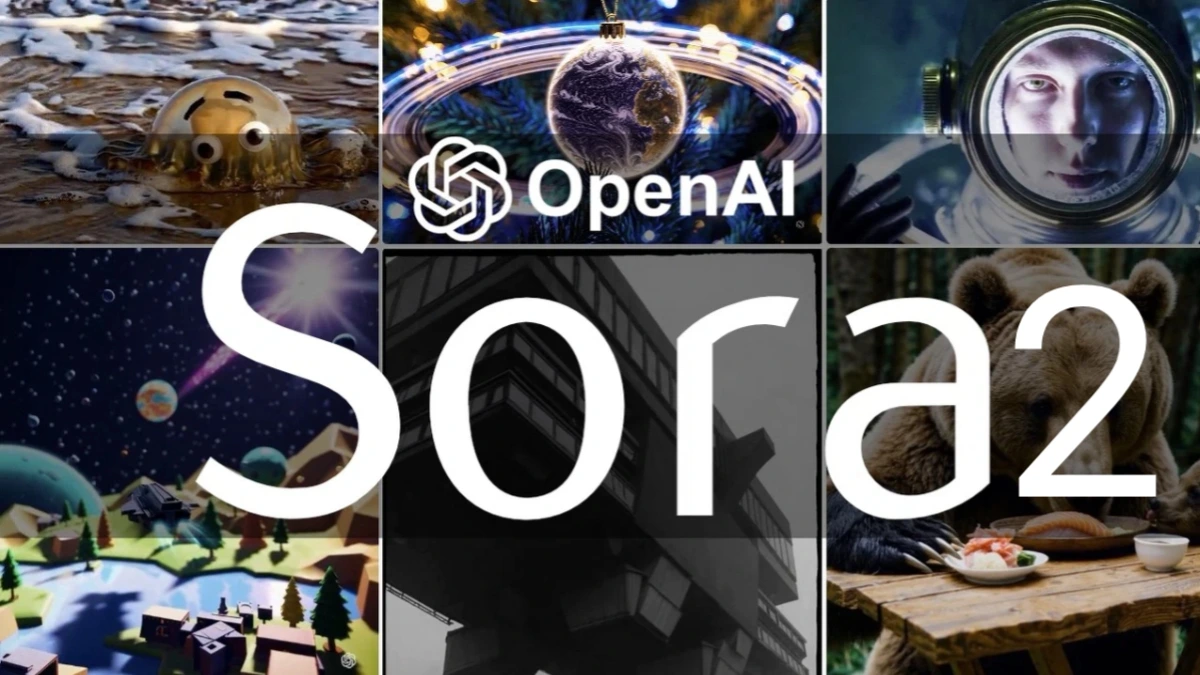SAN FRANCISCO — OpenAI on Tuesday unveiled Sora 2, the latest version of its artificial intelligence model for generating video and audio, alongside a new mobile app that allows users to create and share AI generated clips featuring “cameos” of themselves and others.
Introduced during a livestreamed event, Sora 2 builds on the company’s earlier efforts to produce lifelike video through generative AI.
The update enhances realism, adds speech generation, and powers the new Sora app, which functions as a social platform for discovering and remixing AI generated videos.
Video models are getting very good, very quickly, OpenAI said in its launch statement. Sora 2 brings us closer to simulating real world physics and human motion. OpenAI first introduced Sora in February 2024 as a text to video model capable of producing short photorealistic clips.
While the first version was widely praised for visual creativity, it sometimes struggled with motion consistency and real world physics, such as accurately depicting bouncing objects or fluid dynamics.
The updated Sora 2 model seeks to address those limitations. In demonstrations released Tuesday, OpenAI showcased sequences of gymnasts performing flips, skateboarders executing tricks, and cinematic nature scenes with improved lighting and depth.
The company said the model now better obeys the laws of physics and includes an upgraded speech synthesis capability, allowing characters in generated videos to speak with synchronized lip movement.
The launch of the Sora app marks OpenAI’s entry into a new category social platforms for AI generated media. The app’s interface resembles existing short form video platforms, with an algorithmic feed and a steerable ranking system that lets users tailor their viewing preferences.
Access to the app is currently invite only and available on iOS devices in the United States and Canada. OpenAI said it will gradually expand availability while managing server demand, citing the high computational cost of video generation.
Experts say Sora 2 represents a major milestone in multimedia AI but also raises questions about privacy, authenticity, and moderation.
This is a significant leap in generative AI’s ability to mimic reality, said Dr. Elena Martinez, a computer science professor at Stanford University.
But with realism comes responsibility. Platforms like Sora must ensure that likenesses are used ethically and that deepfakes are clearly labeled.
OpenAI has pledged to watermark all AI generated videos and embed industry standard metadata to indicate artificial creation.
The company also said user consent is required for cameo creation, and permissions can be revoked at any time. Tech policy analyst James Wu said regulators will likely watch closely.
As AI generated media becomes indistinguishable from real footage, transparency tools and digital watermarks become crucial, Wu said. “Without them, public trust could erode quickly.”
Sora 2 joins a growing field of generative video systems. Competitors include Google’s Lumiere, unveiled earlier this year, and Runway’s Gen-3 model.
Analysts note that while each platform boasts unique features, OpenAI’s integration of personalized cameos and a social sharing app sets it apart.
According to a 2025 report from research firm CB Insights, global investment in generative AI tools reached $27 billion in the first half of the year, with video generation technologies accounting for nearly one third of that total.
Industry observers note that Sora 2 could play a central role in OpenAI’s broader strategy to build consumer facing products beyond text based tools like ChatGPT.
Early users who received invitations to test the Sora app described a mix of excitement and caution. It’s surreal seeing myself skydiving or riding a dragon in seconds, said Megan Price, a graphic designer from Seattle. “But it’s also a bit unnerving to know AI can recreate my likeness so easily.”
Parents expressed interest in the app’s family controls. “My teenage son is fascinated by AI,” said Daniel Kim, a father of two in Toronto. “I appreciate the parental time limits and the guardrails to block unsafe content.”
OpenAI said the app includes automated filters that prevent users from generating videos with sexual content, extremist imagery, or self harm themes. The company has also expanded its moderation team to review reported videos for bullying and harassment.
OpenAI framed Sora 2 as a step toward more advanced “world simulation” models, which could power future robotics, virtual reality, and digital entertainment.
General purpose world simulators and robotic agents will fundamentally reshape society and accelerate the arc of human progress, the company wrote in its statement.
Industry experts anticipate gradual integration of Sora 2 into commercial workflows, including film previsualization, marketing, and interactive storytelling. However, concerns about misuse particularly in misinformation or unauthorized likeness replication remain front of mind.
Regulators in California and the European Union are already considering new laws requiring disclosure of AI generated content. Analysts say OpenAI’s preemptive watermarking could help the company align with upcoming standards.
With Sora 2, OpenAI continues to push the frontier of generative AI, blending creative potential with complex ethical questions.
The model’s improved realism and speech capabilities mark a technical leap, while the accompanying Sora app signals the company’s move toward consumer-driven AI media platforms.
As access expands, both creators and policymakers will watch closely to see how the technology reshapes online expression and how effectively OpenAI’s safeguards hold up under public use.

